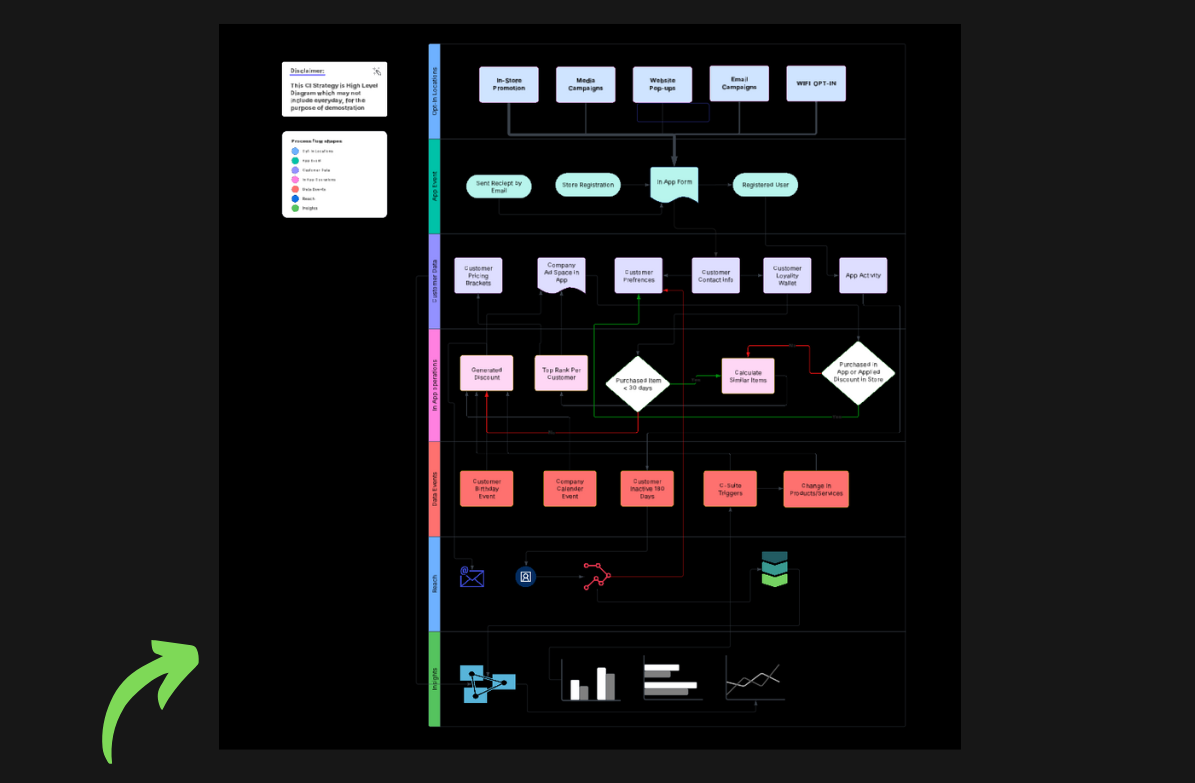Key Takeaways
- Understanding the 3 R’s—Retention, Reactivation, and Referral—provides a foundational strategy for enhancing customer loyalty.
- Improving customer retention involves meeting expectations, exceptional service, and a strong community.
- Applying the 80/20 rule helps identify and focus on high-value customers for personalized engagement.
- The 8 C’s of customer retention framework offers comprehensive insights for developing a robust retention strategy.
- Collecting and analyzing customer feedback is vital for continuous improvement in services and offerings.
- Exceptional customer service is a cornerstone of retention strategies, necessitating well-trained teams.
- Loyalty programs serve as a powerful tool for encouraging repeat business and cultivating long-term relationships.
- Tracking retention metrics, including Customer Lifetime Value (CLV), is essential to gauge and enhance retention efforts.
- Personalized marketing significantly boosts engagement and retention levels by tailoring messages to individual preferences.
How to Increase Customer Retention
In today’s competitive marketplace, retaining customers is just as crucial as acquiring new ones. With customers having countless options at their fingertips, businesses must adopt effective strategies to not only secure but also nurture these relationships. This article delves into various facets of customer retention, including essential strategies, metrics to track, and the significance of personalized marketing campaigns.
What are the 3 R’s of Customer Retention?
Definition of the 3 R’s
The 3 R’s of customer retention include Retention, Reactivation, and Referral.
- Retention focuses on keeping existing customers engaged.
- Reactivation involves re-engaging customers who have become inactive or disengaged.
- Referral encourages satisfied customers to refer new clients, increasing customer acquisition through word-of-mouth.
Importance of Each R in Customer Retention Strategy
Each component of the 3 R’s contributes significantly to a comprehensive retention strategy. Retention ensures a steady stream of revenue and business continuity, while reactivation opens up previously lost avenues. Referral not only diversifies the customer base but also increases the trust factor since referrals come from personal recommendations.
Examples of How Businesses Implement the 3 R’s
- Retention: Subscription-based services like Netflix continually assess engagement metrics to tailor their content offerings to user preferences.
- Reactivation: Many eCommerce brands send targeted re-engagement emails with promotions to customers who haven’t purchased in a while.
- Referral: Companies like Dropbox and Airbnb leverage referral bonuses, rewarding both the referrer and the new customer with credits or discounts.
How Can Customer Retention Be Improved?
Understanding Customer Needs and Expectations
Businesses must invest time and resources to accurately understand their customers’ evolving needs. Surveys, feedback collection, and analytics can pinpoint expectations and gaps.
Developing a Robust Onboarding Process
A seamless onboarding experience cultivates a positive first impression and ensures that customers understand how to derive value from the product or service. This reduces early churn.
Offering Exceptional Customer Service
Prompt and effective customer service can dispel frustrations, leading to increased satisfaction and loyalty. Companies must train teams to handle inquiries quickly and empathetically.
Building a Sense of Community Among Customers
Creating forums, social media groups, or community events fosters connection among customers, encouraging engagement and brand loyalty. Brands like Nike leverage communities to connect enthusiasts.
What is the 80/20 Rule in Customer Retention?
Explanation of the 80/20 Rule
The 80/20 rule, also known as the Pareto Principle, suggests that approximately 80% of a company’s profits come from 20% of its customers.
Application of the 80/20 Rule in Identifying Key Customers
Identifying the top 20% of customers allows businesses to focus on high-value segments, enhancing personalized marketing and engagement efforts toward those who contribute most significantly to revenues.
Strategies for Focusing on High-Value Customers
Implement special loyalty rewards, prioritize customer service for this segment, and encourage feedback to enhance their experiences and retain them over the long term.
What Are the 8 C’s of Customer Retention?
Overview of the 8 C’s Framework
The 8 C’s represent different aspects crucial for nurturing customer relationships: Clarity, Consistency, Comfort, Connection, Community, Contentment, Confidence, and Care.
Detailed Explanation of Each C and Its Significance
- Clarity: Customers must understand what they can expect from your offerings.
- Consistency: Consistent messaging and service build trust.
- Comfort: A comfortable experience encourages loyalty.
- Connection: Build emotional connections to engage customers meaningfully.
- Community: Foster a sense of belonging among customers.
- Contentment: Ensure customers are satisfied with their experiences.
- Confidence: Inspire trust through reliability and transparency.
- Care: Show concern for customers’ needs and preferences.
Practical Examples of Implementing the 8 C’s
- Businesses can foster community through online forums or social media, allowing customers to interact.
- Clarity can be achieved by providing straightforward product descriptions and customer support guidance.
How Does Customer Feedback Influence Retention Strategies?
Importance of Collecting Customer Feedback
Feedback offers invaluable insights into customer experiences, allowing businesses to identify strengths and weaknesses, ultimately guiding improvements.
Different Methods for Gathering Feedback
Surveys, Net Promoter Score (NPS) assessments, social media monitoring, and direct outreach are effective ways to collect customer feedback.
Analyzing Feedback to Enhance Customer Experience
Data analytics tools can help dissect feedback, revealing patterns that inform strategic adjustments in service or product offerings.
What Role Does Customer Service Play in Retaining Customers?
The Impact of Customer Service on Satisfaction and Loyalty
Exceptional customer service is often the determinant of lifetime customer value, making it essential for retaining satisfied customers and minimizing churn.
Training and Empowering Customer Service Teams
Investing in continuous training equips staff with the knowledge and skills needed to enrich customer interactions. Empowering them fosters a culture of problem-solving.
Case Studies Showcasing Effective Customer Service Strategies
Companies like Zappos are renowned for their customer service excellence, showcasing how care and attention can directly impact customer loyalty.
How Can Leveraging Loyalty Programs Help Improve Customer Retention?
Overview of Loyalty Programs and Their Benefits
Loyalty programs reward repeat purchases and can significantly enhance customer retention rates by providing incentives for ongoing patronage.
Different Types of Loyalty Programs
Programs can take many forms, including point systems, tiered rewards, or subscriptions that offer exclusive benefits.
Best Practices for Designing Effective Loyalty Programs
Successful loyalty programs are clear, easy to join, and compelling. Personalization based on customer data significantly boosts their effectiveness.
What Metrics Should Be Tracked to Measure Customer Retention Effectively?
Key Metrics for Measuring Customer Retention
Important metrics include Customer Retention Rate (CRR), Churn Rate, and Customer Lifetime Value (CLV).
Importance of Customer Lifetime Value (CLV)
CLV provides insights into the total worth of a customer throughout their relationship with your business, helping to justify investments in retention strategies.
Tools and Techniques for Tracking Retention Metrics
CRM software, analytics platforms, and customer feedback tools can streamline the process of measuring, analyzing, and responding to retention metrics.
How Can Personalized Marketing Campaigns Impact Customer Retention Rates?
The Significance of Personalized Marketing
Tailoring messages to individual customer preferences enhances relevance, thereby increasing engagement and retention rates.
Examples of Personalized Marketing Strategies
Utilizing customer data to send targeted ads or personalized email recommendations can significantly improve conversion rates.
Measuring the Impact of Personalization on Retention
A/B testing and customer feedback mechanisms can reveal the effectiveness of personalized campaigns on retention rates.
By implementing these strategies and frameworks, businesses can create a formidable customer retention strategy that not only enhances loyalty but also paves the way for sustainable growth.
For more information and comprehensive resources to aid in your customer retention efforts, visit Cloud Continuous.



